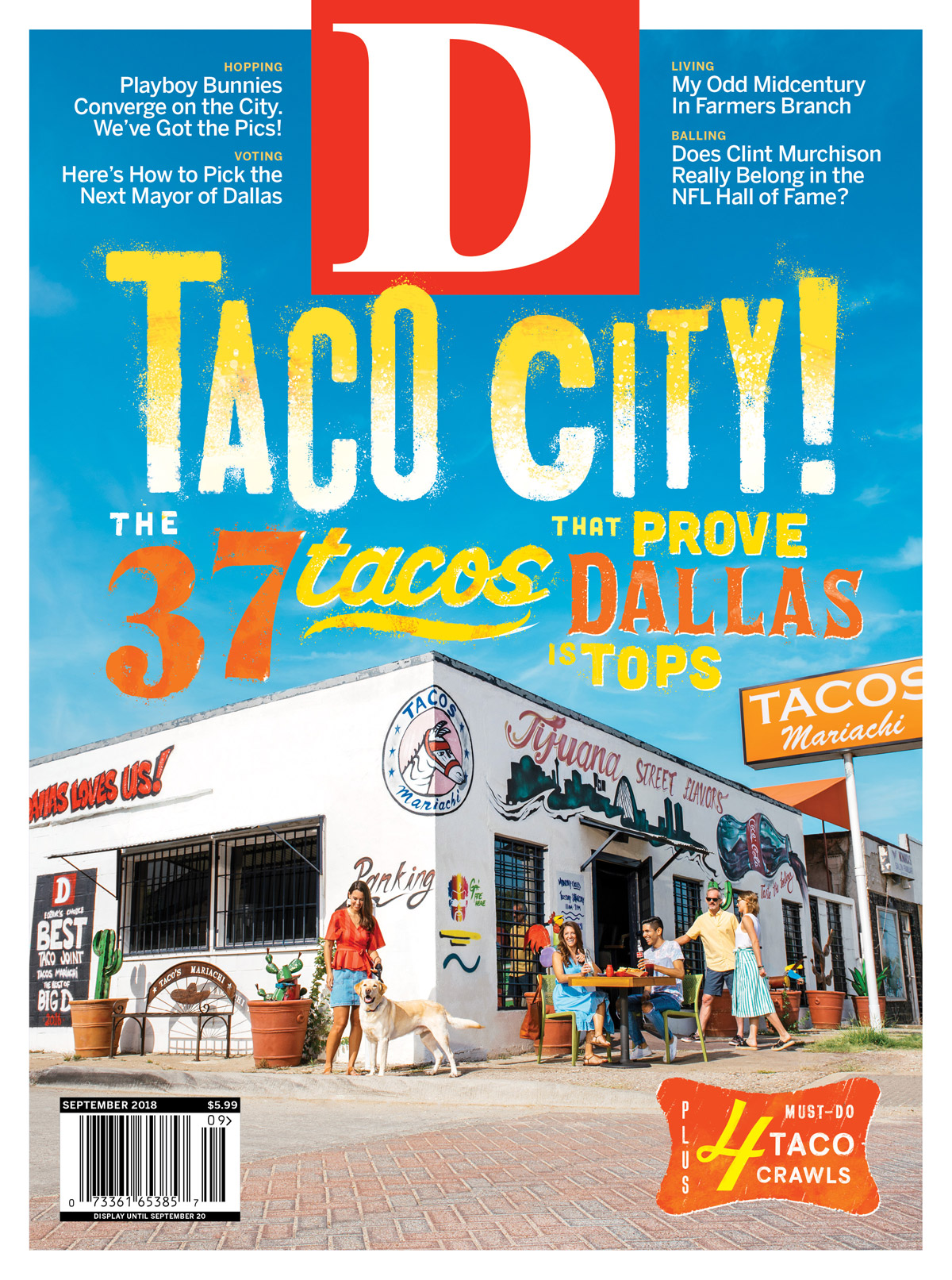Hundreds of former Playboy Bunnies from all over the world will meet in Dallas for their international reunion this weekend. The four-day private event, which takes place at the Renaissance Dallas Addison Hotel, will bring together members of the exclusive sorority. There will be cocktails, a boot-scootin’ luncheon, and a disco party.
The Dallas Playboy Club opened in 1977 on the second floor of Expressway Tower, at North Central Expressway and what is now SMU Boulevard, in the same building that housed the Dallas Cowboys headquarters, in the same season the team won its second Super Bowl. The members-only playground, which required an actual key to get into, lasted a mere five years, closing in 1982.
The original owner, real estate developer Lenny Licht, had no experience in the restaurant business. Just a dream. He had to fly to Chicago to pitch Playboy on the idea of being the sole Texas operator of a franchise for the famed Playboy Club, which grew to prominence in the 1960s on the success of Hugh Hefner’s first nightclub in Chicago. He brought in two partners, a restaurant manager and an architect, to help him execute his idea.
“When I was in my 20s I reached out to Playboy. They said they would consider [opening a Dallas location] with the right buyer and right owner. And so, I went through the process, and they did an FBI investigation —they look at everything about you. I flew out to Chicago a few times. Long story short, they approved me and I bought the franchise for the state of Texas.”
Licht, who didn’t drink and wasn’t much of a nightclub guy, sold the concept to his two partners after about a year. But the Dallas Playboy Club was born. At the chain’s height, there were locations in 23 American cities, as well as in Canada, Japan, and Jamaica. Hef opened casinos in New Jersey and London and even expanded into hotels. But the only Texas location was the club in Dallas.
Regardless of one’s stance on Playboy founder Hugh Hefner and his publication, there’s no denying the magnitude of the brand he built. Lesser known is the impact his clubs had on the women who worked in them. They were chosen because they embodied Hefner’s vision of beauty and charm. When they slipped into their suits, they transformed into dazzling illusionists. They became the icons that ignited the whimsical world that Hefner built.
The Dallas Playboy Club was a pleasurable escape from the trials of life—not just for the customers, but also for many of the women who worked there. These are some of their stories. (All of the women below worked at the Dallas club, except for Diana, who organized the upcoming reunion.)
Diana Petersen
Chicago
International Playboy Bunny Reunion coordinator
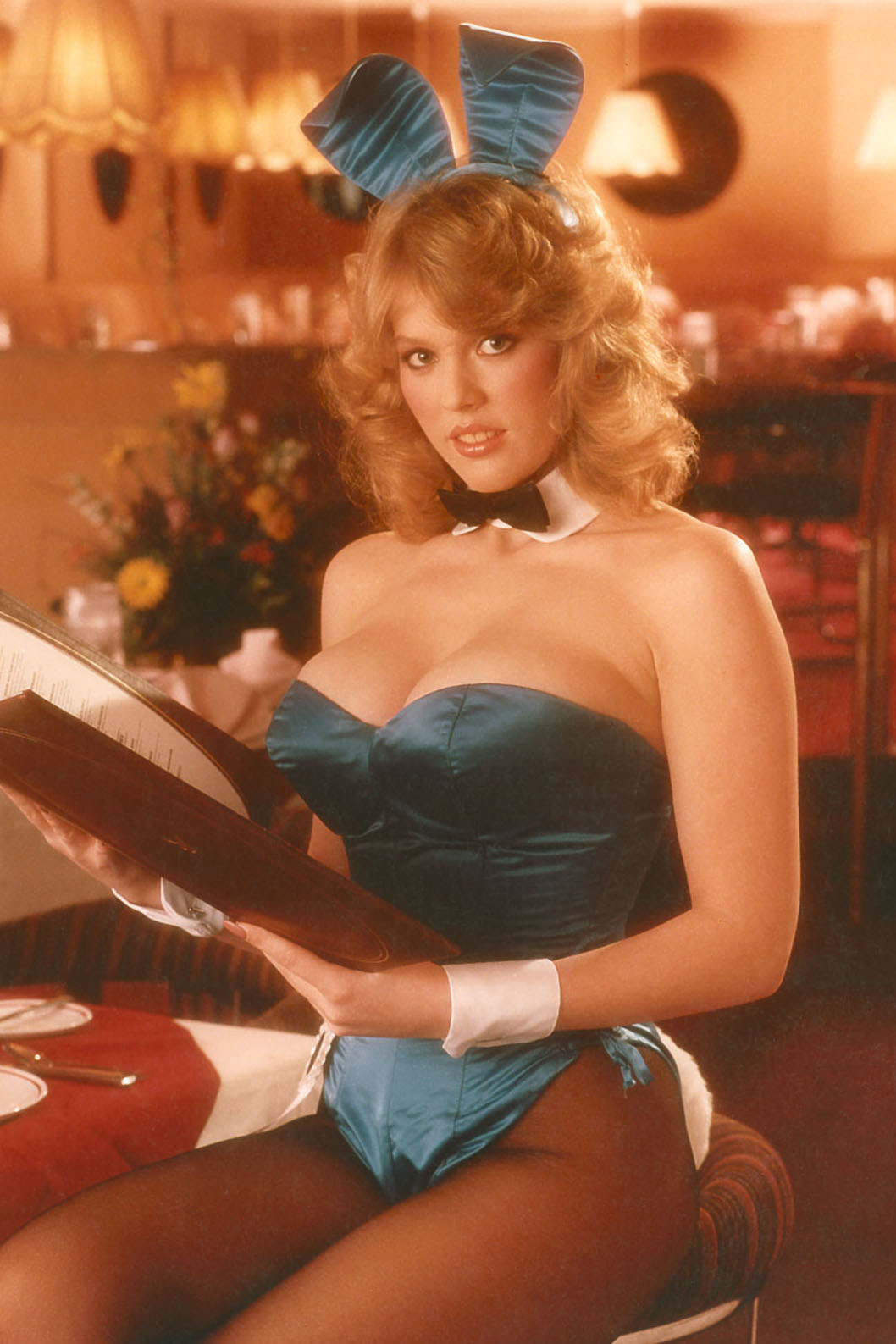
“I worked at the Lake Geneva and Chicago clubs. I’m one of the older Bunnies, but not the oldest. Alice Nichols is an original Bunny. She’s 86 years old and went on to be a national Bunny Mother. She worked at many clubs.
“This event is about showing that our past matters. We have a common bond and friendship. We meet up in a different city every two years. This year it’s in Dallas. I found about 1,900 Bunnies from around the world and contacted them. We have people coming from Finland, Jamaica, the Bahamas, and Europe.
“So far we have 175 girls coming. I’m hoping for 250 or 300. Some of these girls haven’t seen each other in 30 to 50 years. Sometimes when you say, ‘I’ll see you later!’ ‘later’ may be 30 years from that time.”
Thressa Anderson
Jacksonville, Florida
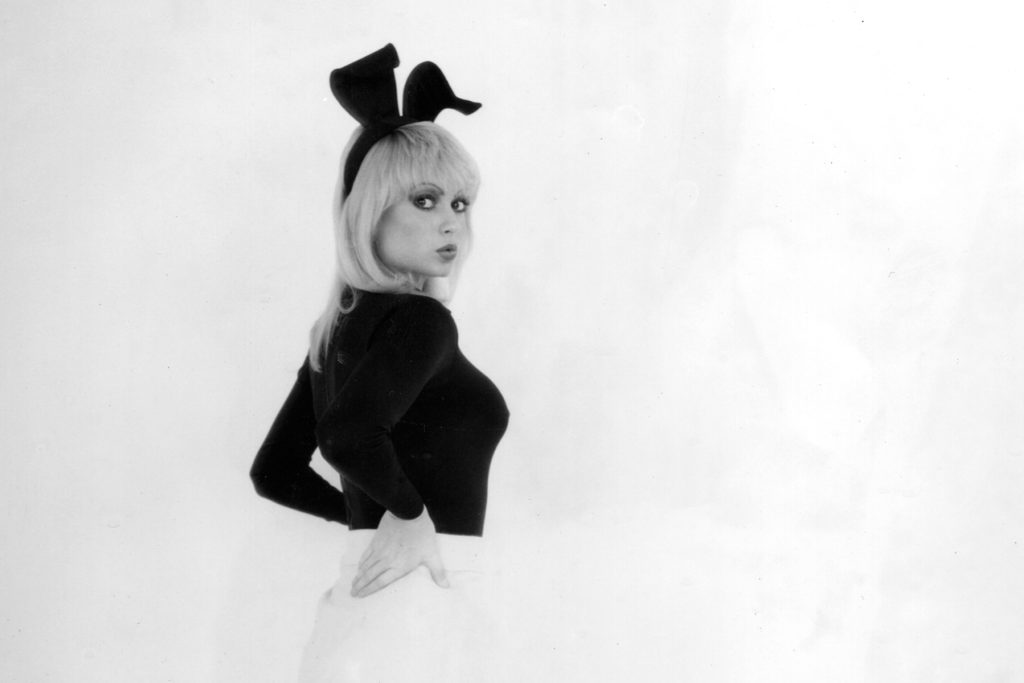
“I worked at the club from 1978 until it closed, in 1982. I was 20 years old when I started working there. I still remember everything. It was the best years of my life. The first weekend I worked, there was a Cowboys game on TV and Howard Cosell and Jimmy ‘The Greek’ Snyder came in. It was always exciting. There were movie stars and TV stars and rock-and-roll musicians. It was just a pretty magical place.
“It was so upscale. It wasn’t like a topless bar or anything; you had to have a key to get in. It was for members only. I remember drinks costing $5.50, which was a lot back then.
“I was a Silver Anniversary Bunny. I still have some of my suits. I have the red one and the silver one.
“I met my best friends of my life there. I call them every day, even after all of these years. A group of incredible women from all over the world. It was so empowering. Talking about it, I can’t stop smiling. I dream about going back. It was just a fabulous time and a fabulous club.”
Mary Ann Russell
Dallas
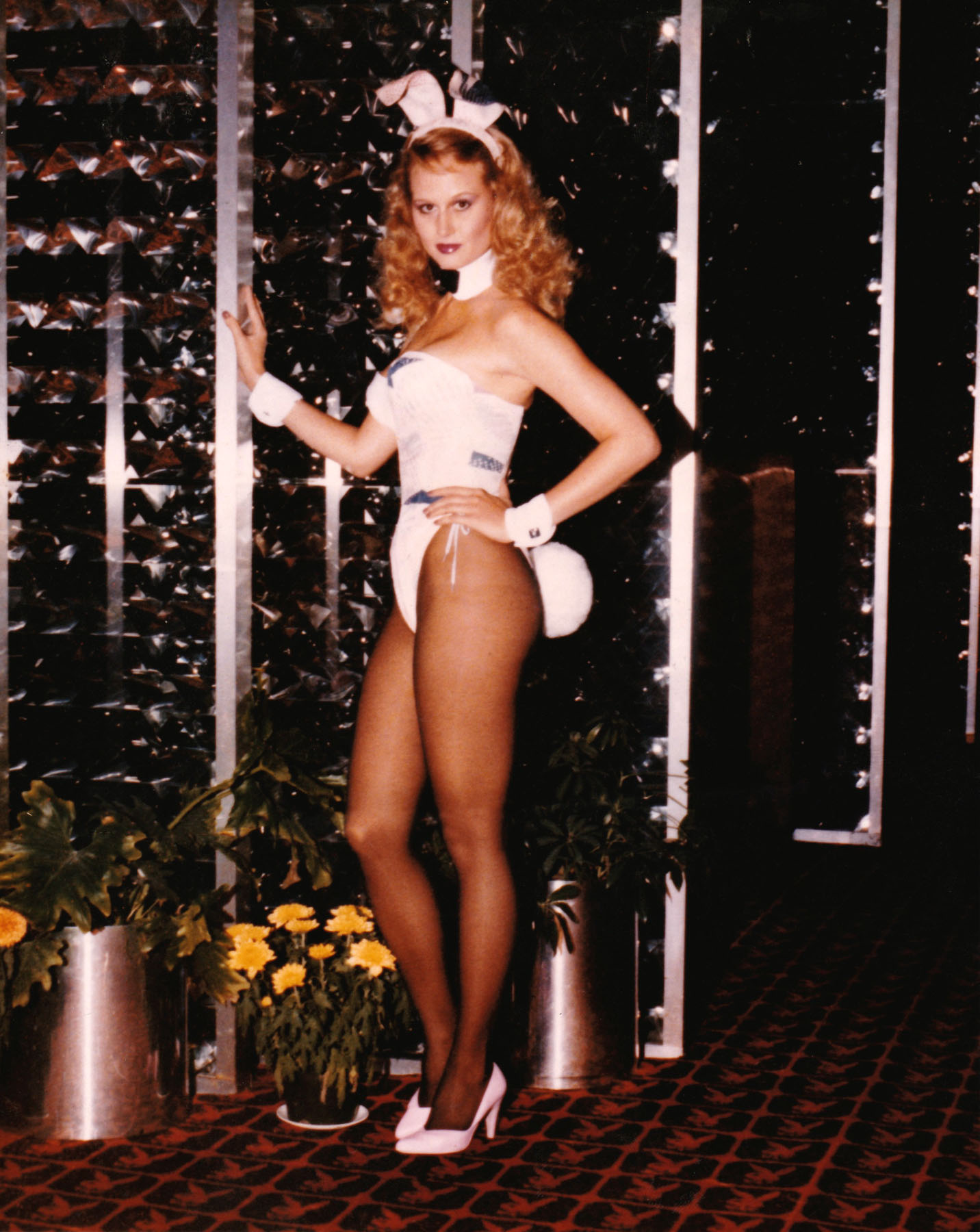
“I started in 1981. It was the tail end of the club, no pun intended. It was so wonderful and glamorous. It was almost an illusion. We wore more clothes than you’d think.
“There were two types of pantyhose: support hose and black stockings. The made-to-fit costumes were tedious to put on. It took up to three girls to get one girl into her outfit. One would hold it at the waist, one would hold it at the top, and another would zip it up. I used two pairs of tube socks to fill it up. My outfit was pastel; it took five years to get a black suit. I really wanted a black suit.
“There was the main den where cocktails were served, the lounge with bumper pool, the showroom where performers headlined and dinner was served, and the game room. There was a regular stream of clients. So many Dallas Cowboys. The Dallas Cowboys Cheerleaders and the Bunnies had an ongoing rivalry. We weren’t supposed to date customers, but they loosened the rules for celebrities. We were well-protected. You couldn’t touch a Bunny.
“The best thing I got out of the experience was my friends. I’m still friends with them. The sisterhood of the Bunnies is just amazing. Some of the girls were making more money than their fathers did. It was very empowering for a woman. I had great insurance and benefits, and the money was good. I was in school at the time; a lot of the girls were. We were working toward bigger and better dreams.”
Lori Bailey
Arlington
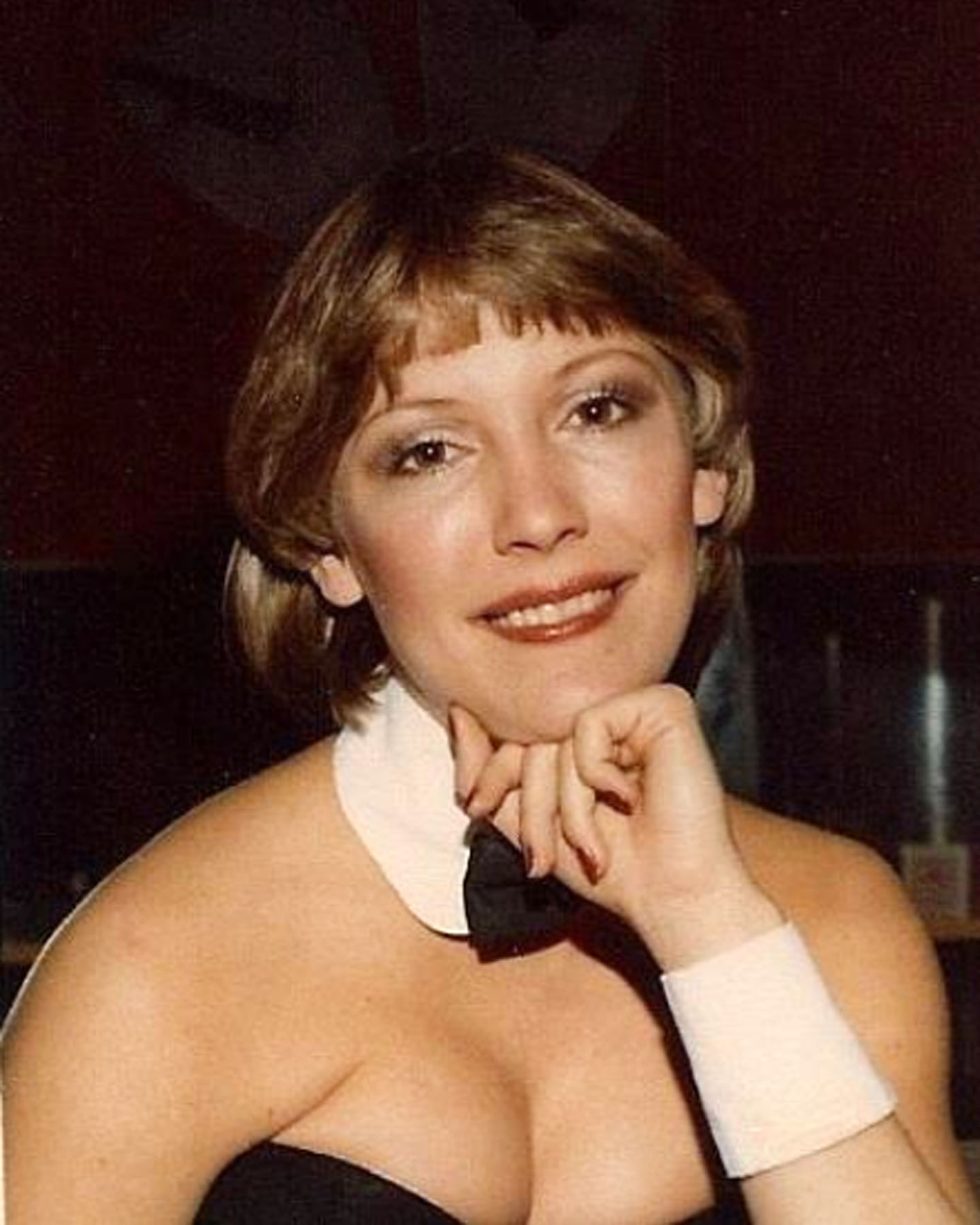 “I was an original Bunny. I was working a terrible job, and my boyfriend at the time saw an ad in the Dallas Morning News. He was like, ‘You should do this.’ I secretly auditioned and waited on an acceptance letter. I was thrilled to leave that job. I never looked back.
“I was an original Bunny. I was working a terrible job, and my boyfriend at the time saw an ad in the Dallas Morning News. He was like, ‘You should do this.’ I secretly auditioned and waited on an acceptance letter. I was thrilled to leave that job. I never looked back.
“It was the most wonderful four years of my life. Us Bunnies loved each other. We looked out for each other. We still hang out together. A lot of girls made a lot of money and blew it, but I bought a house at 22. It was pretty revolutionary for the ’70s.
“Hugh was a revolutionary. He changed everything. People sometimes think of the Bunnies as strippers, but it was not even close to that. The Dallas Playboy Club was very elite, and I thoroughly enjoyed working there. Well, except for the high heels. My feet suffered. Our method of a foot massage was to stick our feet in the toilet and flush it over and over again.
“The first celebrity I met was Mel Tormé, and my favorite was Lainie Kazan. I got to watch the show when she performed. When the lights went down, the Bunnies stopped serving. I remember sitting on the steps and crying when she was performing. It was so beautiful. She was so incredible.
“There were some happy times there. We took it in stride, put money in our pockets, and danced all the way home.”
Vicki Link Rodgers
Dallas
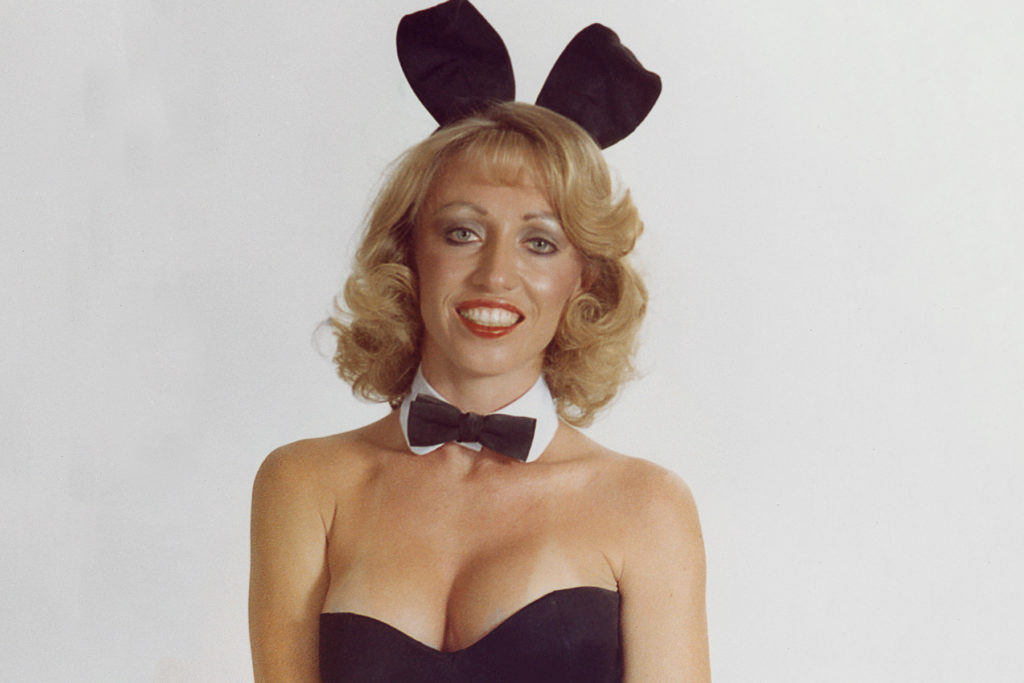 “I worked a lot back in the showroom, and I worked some lunches. I did work some in the disco, too.
“I worked a lot back in the showroom, and I worked some lunches. I did work some in the disco, too.
“We always liked it when we’d go out on exhibition games. We did a lot of baseball games, a lot of softball games, a lot of sports. I was on the front page of the Dallas Times Herald making a touchdown.
“It was all positive, and most of us all got along. I don’t have any negative memories at all. They did a story on me in the Dallas Morning News [in 1977] called ‘Birth of a Bunny.’ It was about how a lot of us went through hard times, and the club was a way to help. I was a single mother with two kids, and the guy who I had most recently lived with committed suicide. I didn’t have a car and was just trying to get by.
“I worked at the club for about five years, almost till the end. Unfortunately, I had gone off with another wild man and that didn’t end well. My husband who I’m married to now, we’ve been together going on 30 years. After I left the club, later in the ’80s, I had several good sales jobs, and my husband and I had a produce distribution business. Life has been an adventure.
“I’m looking forward to seeing my old friends and meeting new ones. I still have my outfit, but don’t ask me to put it on. That would be nauseating.”
Suzanne Hashian
Boston
 “I was hired in ’77 and worked through ’79. I was a door Bunny; I took people’s keys. I also worked at the gift shop. I would go out and work charity events: golf tournaments, hockey tournaments. I would drive the golf cart and hang out with Jimmy Dean and Mickey Mantle. I didn’t know who Mickey Mantle was at the time, but I knew Jimmy because I eat sausages. Later, I started doing a magic show with a man named Rick Walker. He was fabulous. It really became like a family.
“I was hired in ’77 and worked through ’79. I was a door Bunny; I took people’s keys. I also worked at the gift shop. I would go out and work charity events: golf tournaments, hockey tournaments. I would drive the golf cart and hang out with Jimmy Dean and Mickey Mantle. I didn’t know who Mickey Mantle was at the time, but I knew Jimmy because I eat sausages. Later, I started doing a magic show with a man named Rick Walker. He was fabulous. It really became like a family.
“My husband [Sib Hashian] was the drummer in the rock band Boston. I met him at a Playboy event. I didn’t know who they were. I was raised on classical tunes and never listened to rock and roll. I had to take them to dinner, and somehow it ended up just being Sib and me. We kept in touch, and the next thing I know, he was wanting me to go on tour. I had to tell my parents: ‘I’m leaving the country with a man I just met.’ They said no. My parents then came to meet him at the Texxas Jam in 1979.
“I had come to Boston for a visit and he wanted me to stay. I moved in, and we had a child. It was very romantic. He was my best friend, and I miss him every day. [Sib passed away onstage while performing in 2017.] We had three wonderful children together, and the sixth grandchild is coming in November. They’re the branches that live on from the legacy of his tree.”
Terry Parrish
Rockwall
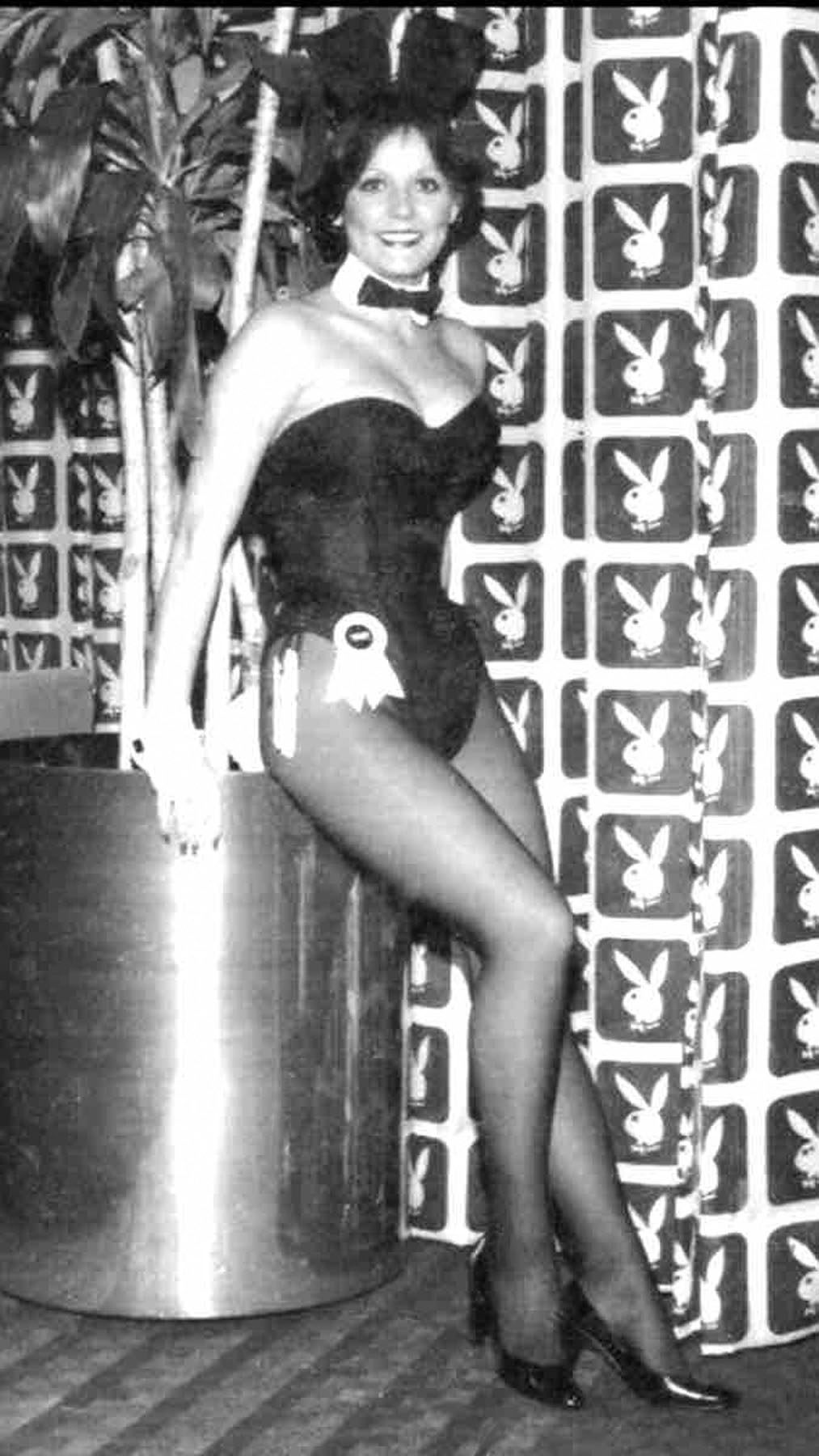 “I was one of the original girls. We had to go through at least four to five interviews. It reminded me of beauty pageants. You wouldn’t hear from them for a few weeks, and then you would get a letter. And then there was another audition at the Fairmont.
“I was one of the original girls. We had to go through at least four to five interviews. It reminded me of beauty pageants. You wouldn’t hear from them for a few weeks, and then you would get a letter. And then there was another audition at the Fairmont.
“We had to wear a swimsuit, and there were celebrity judges. Rose Marie Mazetta from The Dick Van Dyke Show was one of them. You started at the top of a runway and then walked down it—in high heels. It was very scary and intimidating.
“There were so many people on-site. More than 5,000 girls tried out. Out of that, they chose 188. Then we had to go through training. There were classes for six weeks, for almost all day.
“People would stand in line for hours to get into the club. And we were so protected and treated with respect. People couldn’t touch us. You would stuff so much money down the front of your suit that when you unzipped it, all of the bills would fall out onto the floor. We were making $200, $300, up to $600 in a night. I paid cash for a new car.
“I moved to Los Angeles in 1981 and was looking for a place to stay. I lived in the Playboy Mansion for two weeks. Hugh was such a wonderful man. He was caring. Some girls were having a rough time financially, and he would help them out. He didn’t know me, but he knew I was one of the Bunnies, one of his girls. He was so loving. He had a dream, and I was so privileged to be a part of that. We’re a family of Bunnies. Some went on to be attorneys, some are teachers. I have two masters’ and am working on my doctorates. I’m a licensed mortician and teach American history.”
Jill Day-Schuler
Justin, Texas

“I was there the day it opened until the day it closed. When I found out I got the job, I was elated and scared at the same time because I had to tell my parents. I had to get my birth certificate from my mother. She was excited; my stepdad not so much. But he came around.
“I was a camera Bunny. People would ask if they could have their picture made—husbands and wives together, or they’d want you in the photo with them. Then I was promoted to showroom and made quite a bit more money.
“I met so many famous people at the club: Brenda Lee; Gary Puckett; Blood, Sweat & Tears; George Gobel. Frankie Avalon was very lovely.
“I started in a purple costume. I wish I had taken it, but we weren’t supposed to take our suits out of the club. I was a goody-two-shoes. Well, I wasn’t that good. All the girls would go dancing after work and nobody would bother us. Men were intimidated by us and scared to approach us.
“I met Hugh Hefner when he did the opening of the club; he was very cordial and polite. He wasn’t a tall man. You think of him as being larger than life, but he’s not. But he was good-looking.
“I know the Cowboys Cheerleaders didn’t like us. They thought we were trash, but they were doing stuff that I didn’t even know what it was at the time. I met a few Dallas Cowboys: Roger Staubach, Randy White, Hollywood Henderson. They were sweet and very well-behaved.
“I became a massage therapist, and right now I work for La Mer. I also petsit. I like anything nurturing; it’s what I do. I have one daughter who is 30, no grandbabies yet, but I’m praying. I live on 4 acres with my husband, chickens, five dogs, a cat, and a bunny. I give my chickens ice water a couple times a day and they stand in it. I stand in it, too. I pamper them. I just about died the first time a chicken laid an egg—a pet that gives something back!”
Jan Dudley Gentile
Birmingham, Alabama
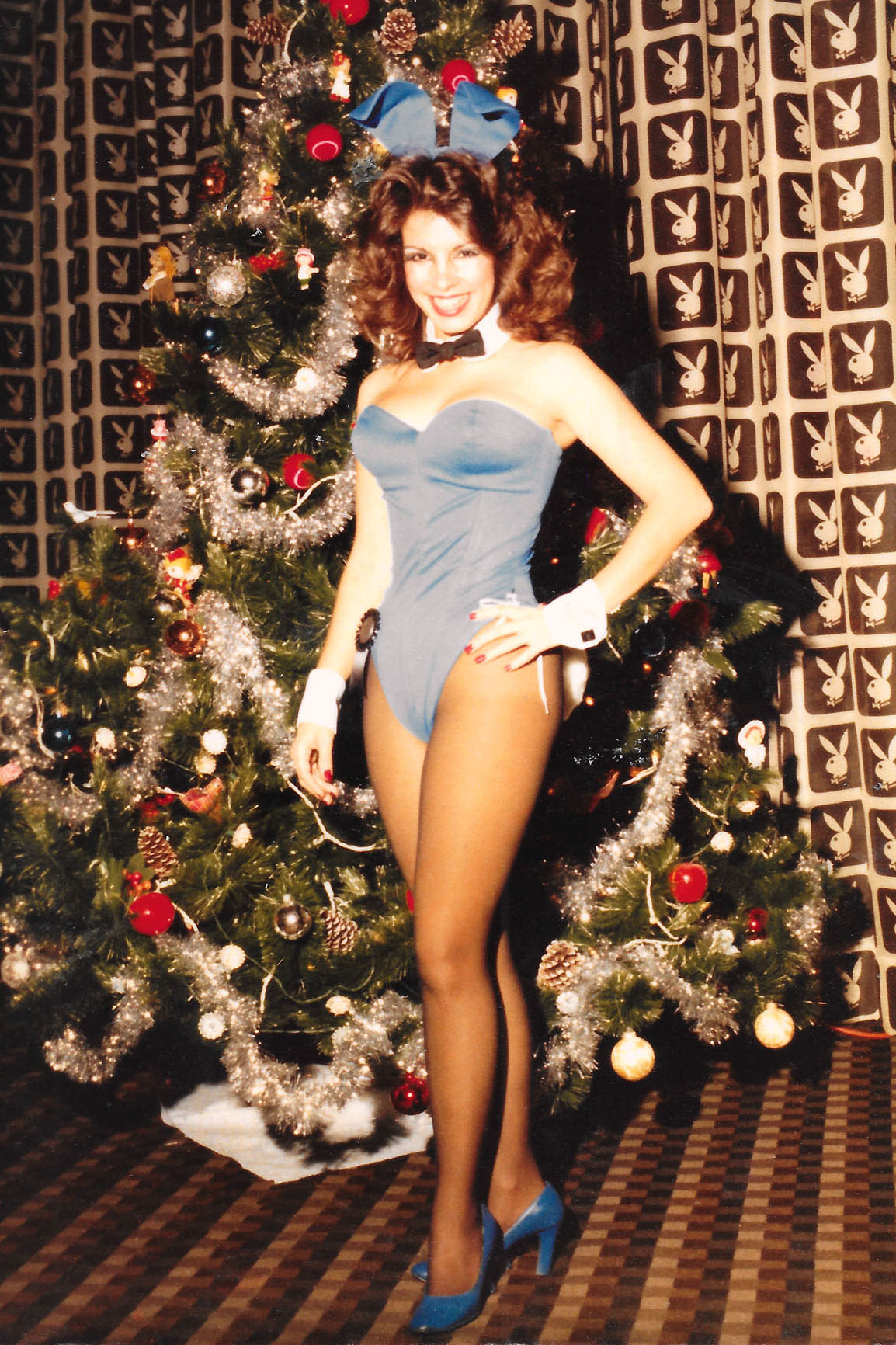 “I was 27, and I felt extremely old. Most of the girls were 22 or 23 at the Dallas club and drop-dead gorgeous. The day I found out I was hired, I was over the moon. They wanted me to start as soon as I could. Well, I worked full time at KZEW The Zoo, which in the ’70s was revered in Dallas. It was more than a radio station; it was a lifestyle. I said, ‘I have to give them two weeks’ notice.’ I’d worked there for several years, and those people had been so good to me. I strutted around that radio station for two weeks like I was queen of the world.
“I was 27, and I felt extremely old. Most of the girls were 22 or 23 at the Dallas club and drop-dead gorgeous. The day I found out I was hired, I was over the moon. They wanted me to start as soon as I could. Well, I worked full time at KZEW The Zoo, which in the ’70s was revered in Dallas. It was more than a radio station; it was a lifestyle. I said, ‘I have to give them two weeks’ notice.’ I’d worked there for several years, and those people had been so good to me. I strutted around that radio station for two weeks like I was queen of the world.
“Bunnies never served the food. We had men who worked in the club in the kitchen, and they would carry it out. Young boys usually, maybe early 20s. They were trained very well. We simply took care of the cocktails.
“My favorite outfit that I had was a beautiful shade of blue that I tried to copy in my home on an accent wall in the living room. It’s kind of a royal blue with a little cobalt thrown in. We wore what the Bunny Mother had available for us. The Bunny Mother kept our outfits clean, repaired, and to perfection because Hef was very specific about what we were supposed to look like, and the suit was everything. Bunny Mothers were under a great amount of pressure to keep us looking good.
“Our Bunny Mother—I can’t remember her name—had her little desk in her office right inside the Bunny Hutch. That’s where we dressed; that’s where our lockers were; that’s where the makeup was done.
“Charlton Heston would probably be the biggest celebrity I met at the club. If you’re my age, you’d think he was Moses because he played in The Ten Commandments.
“I’m looking forward to seeing the girls I used to work with. And to get to show off Dallas is a huge thing for me. I get to show off my hometown to these girls who are coming from all over the world. It’s a gathering of icons. That sounds rather shallow, and I don’t mean for it to be, but it’s just a fact. In our time, the ’60s and ’70s and through the late ’80s, we were icons—we weren’t really people. We were a vision that people had of a perfect female. And of course we weren’t, but in the public eye we were. So a gathering of these women, who all had that same experience that I did, of having experienced that feeling of having been an icon, it’s really going to be good. It’s a positive thing for us all, at this age and point in our lives.”




